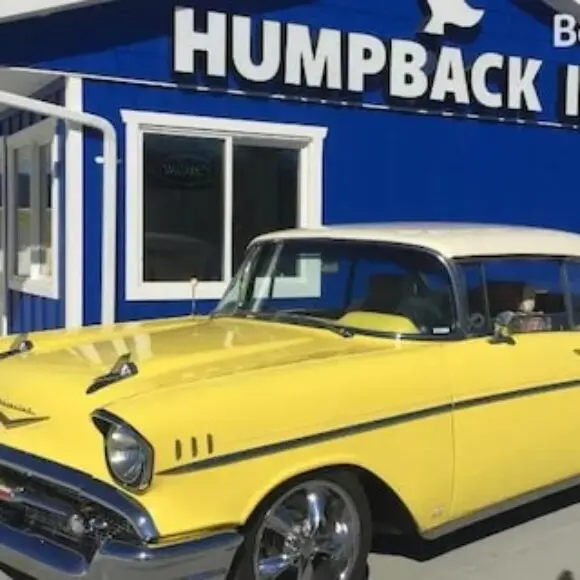Hotel The Lodge On Harrison Lake (main Residence)

The Lodge On Harrison Lake (main Residence)
Hotel The Lodge On Harrison Lake (main Residence) reviews
Looking for a great place to stay in Harrison Hotsprings? Book The Lodge On Harrison Lake (main Residence); rated and is available from CAD $ 1001. The Lodge On Harrison Lake (main Residence) is conveniently located near ferry terminals, and can be booked directly with Trivago.
📍 Address The Lodge On Harrison Lake (main Residence)
6155 Rockwell Dr., V0M 1K0, Harrison Hotsprings, Canada
FAQ
How can I find the latest fare information for the ferry Vancouver sailing from Mayne Island (Village Bay) to Swartz Bay?
To find the latest fare information for the Vancouver Ferry sailing from Mayne Island (Village Bay) to Swartz Bay, it is best to check the Mayne Island to Swartz Bay fares page. Fares can vary depending on the time of year and the type of vehicle. This page offers up-to-date pricing details, ensuring you have the most accurate information before your trip.
What are the current conditions for the ferry Vancouver sailing from Crofton to Saltspring Island (Vesuvius)?
The current conditions for the ferry Vancouver sailing from Crofton to Saltspring Island (Vesuvius) can vary depending on weather and other factors. To stay informed about any potential delays or changes, it’s essential to check the Crofton to Vesuvius ferry conditions page. This page provides real-time updates and information regarding sailing conditions, ensuring you have the latest details before your departure.
Ferry Vancouver
Photography tips for ferry passengers include timing outdoor deck visits during optimal lighting conditions and bringing appropriate camera equipment for marine environments. Sunrise and sunset crossings provide particularly dramatic lighting opportunities. Zoom lenses help capture wildlife and distant mountain scenery during the journey.
Seasonal variations significantly affect ferry operations, with summer bringing increased frequency and capacity to handle peak tourist demand. Winter schedules may have reduced sailings, while spring and fall offer moderate crowds with pleasant weather. Holiday periods require advance planning due to extremely high demand for popular routes.
Connecting transportation from ferry terminals includes public transit, rental cars, taxis, and ride-sharing services. Victoria’s Swartz Bay terminal connects to downtown Victoria via public bus service. Nanaimo terminals provide access to Island-wide transportation networks for exploring Vancouver Island’s diverse attractions and natural areas.
The Tsawwassen to Swartz Bay route is the most popular ferry connection, linking the Vancouver area directly to Victoria, the capital of British Columbia. This 95-minute journey travels through the picturesque Gulf Islands, providing passengers with breathtaking views of islands, mountains, and marine wildlife. The route operates year-round with frequent departures, making it the preferred choice for tourists visiting Victoria’s attractions.
Vehicle transport options accommodate everything from motorcycles to large RVs and commercial trucks. Different vehicle categories have specific size restrictions and pricing structures. Passengers traveling with vehicles should arrive early for check-in and security screening processes at ferry terminals.
Ferry pricing varies by route, season, and vehicle type, with significant differences between passenger fares and vehicle transportation costs. Peak season rates apply during summer months when tourism demand is highest. Multiple pricing tiers accommodate different traveler needs, from foot passengers to large RVs and commercial vehicles.
Cargo and freight services operate alongside passenger ferries, supporting Vancouver Island’s economy and supply chains. Commercial vehicles transport everything from fresh produce to building materials. This integrated transportation system maintains Vancouver Island’s connection to mainland markets and services.
Cultural experiences begin during ferry travel with onboard art displays featuring local Pacific Northwest artists. Indigenous cultural elements appear in vessel names, artwork, and interpretive displays. These features introduce visitors to the rich cultural heritage of Vancouver Island and coastal British Columbia.
Island hopping opportunities exist for adventurous travelers wanting to explore the Gulf Islands during their ferry journey. Some routes provide connections to smaller islands like Salt Spring, Pender, and Galiano Islands. These stops offer unique communities, local artisans, and pristine natural environments.
Ferry reservations are highly recommended, especially during peak summer months and holiday periods when demand significantly exceeds capacity. Advance booking ensures guaranteed passage and reduces waiting times at terminals. Walk-on passengers and cyclists typically have more flexibility, while vehicle spaces often sell out during busy travel periods.
Real-time information about ferry schedules, delays, and availability helps travelers plan their Vancouver Island journey effectively. Mobile apps and online resources provide current sailing information and terminal conditions. Staying informed prevents delays and ensures smooth travel experiences.




